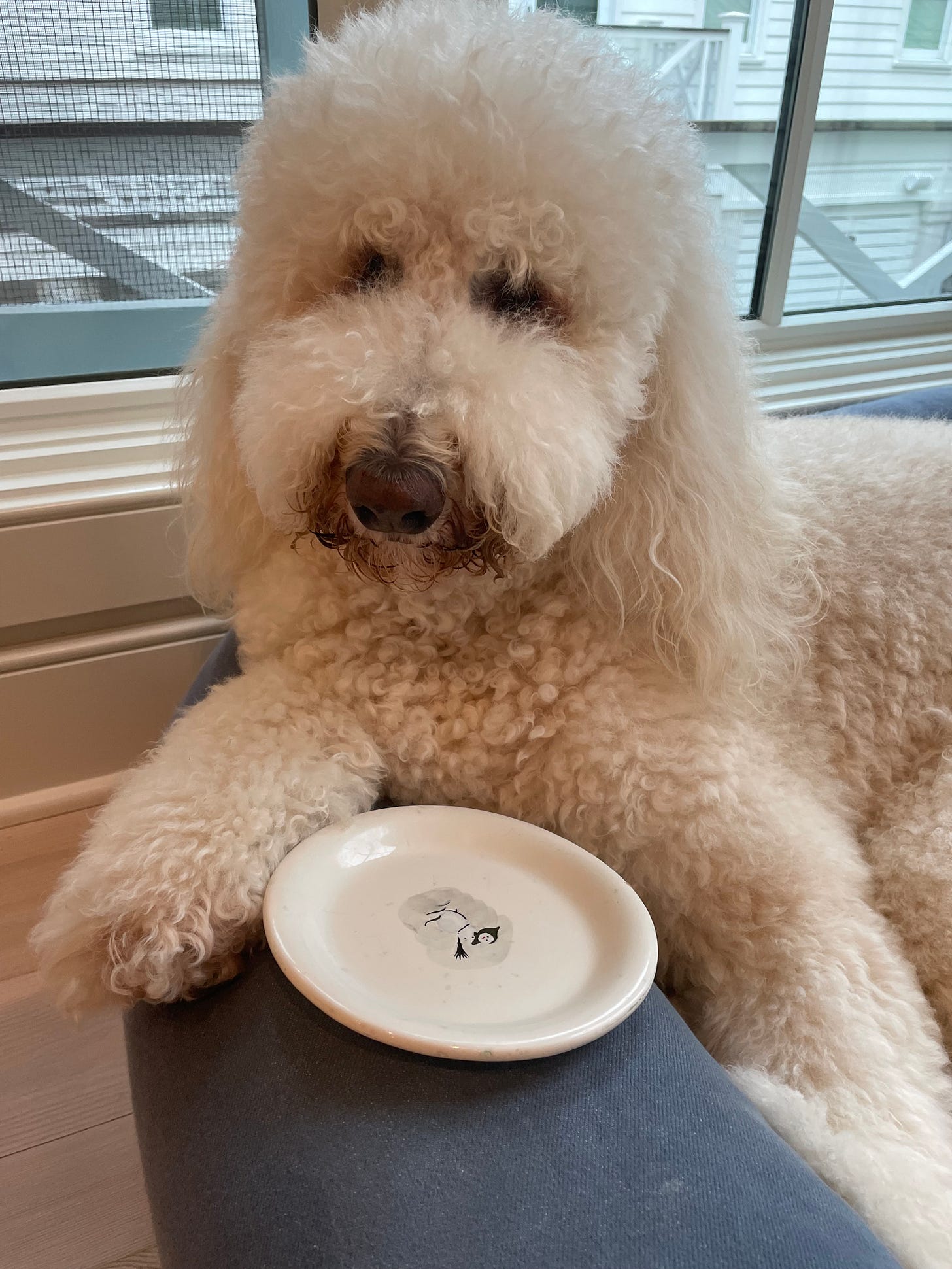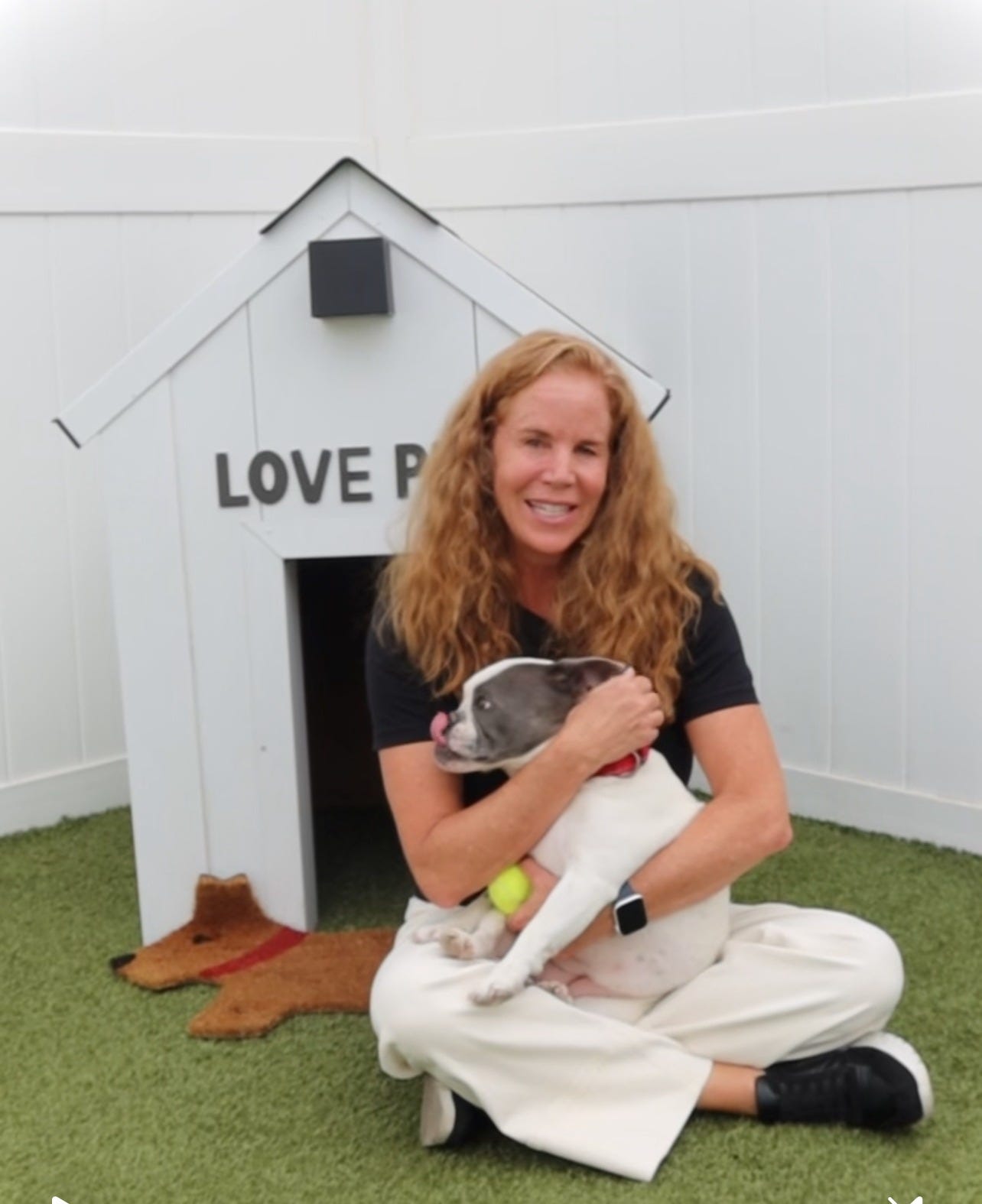Is Your Home Safe for Your Dog? Hidden Dangers You Need to Know This Spring
Essential Tips On How To Ensure Your Dog Is Safe, Healthy, and Happy at Home.
As the days get longer and flowers start to bloom, we’re all spending more time outdoors with our dogs. Whether it's the energetic puppy zooming around the yard or the senior who's soaking up the sunshine, spring is the perfect time to make sure your home is as safe as it is welcoming for your pup.
But here’s the thing: as much as we love our dogs, there are everyday hazards around the house that can be surprisingly dangerous - even life-threatening. From those tempting spring flowers on the kitchen table to the snacks left within reach, what seems harmless to us can be a disaster waiting to happen for our furry friends.
Ready to keep your dog safe this season? Let’s dive into the hidden dangers in your home that could send them to the emergency vet—and how you can prevent it. 🌿🐕
🌸 Flowers That Can Hurt More Than They Brighten
We’ve all been there - admiring a beautiful bouquet, only to turn around and find our dog sniffing (or chewing) a petal. What we might not realize is that flowers like lilies, tulips, daffodils, azaleas, carnations and sago palms can be extremely toxic to dogs. Even a small bite can lead to vomiting, seizures, or even kidney failure. It’s a scary reminder that what looks pretty on the table can turn into a dangerous situation in the blink of an eye.
What to look for:
Drooling
Vomiting
Trembling
Lethargy or weakness
Advice:
Stick to safe flowers - roses, marigolds, or snapdragons. And always keep bouquets well out of reach. Or better yet, skip them altogether if you’ve got a curious chewer.
Household Items That Seem Harmless (But Aren’t)
Many dog parents use cleaning products like bleach and essential oils to freshen up their homes, thinking they’re doing the right thing. But what seems like a harmless way to eliminate odors can actually be harmful, especially for dogs. In some cases, essential oils like eucalyptus and tea tree oil can cause coughing, dizziness, or worse, especially when used near their bedding or favorite spots.
Items to be cautious with:
Bleach & ammonia cleaners
Air fresheners & diffusers
Fabric softener sheets
Toilet bowl cleaners (especially those drop-in tablets)
Signs something’s wrong:
Coughing, gagging
Vomiting or diarrhea
Breathing issues
Burns in the mouth (for items they licked or chewed)
Advice:
Use pet-safe cleaners or dilute vinegar-based solutions. And please, double-check those “natural” products—many essential oils are dangerous to dogs.
The Human Treats That Can Be Deadly
It’s easy to give in to those big eyes and a heavy chin resting on your knee at the dinner table - but even a small bite of the wrong thing can be dangerous. Something as innocent as a slice of banana bread could contain xylitol, a common sweetener that’s highly toxic to dogs. Just one bite can lead to seizures, liver failure, or worse. When in doubt, don’t share - it’s not worth the risk.
Toxic human foods:
Chocolate (the darker, the more dangerous)
Xylitol (in sugar-free gum, sugar-free or natural peanut butter, and baked goods)
Grapes & raisins -These are highly toxic to dogs and can cause sudden kidney failure, even in small amounts. One grape or a few raisins could be enough to trigger vomiting, lethargy, loss of appetite, or decreased urination.
Onions, garlic, and chives - These are all part of the allium family and can damage a dog’s red blood cells, leading to anemia. Even small amounts over time (like seasoning on meat or baby food) can build up and cause weakness, vomiting, pale gums, and rapid breathing.
Macadamia nuts - It only takes a small handful (as few as 5–7 nuts) to cause a toxic reaction in a medium-sized dog. Look out for Macadamia nuts in cookies, trail mixes, and nut butters that may contain them.
Avocados - they can be harmful to dogs—especially the skin, pit, and leaves, which contain persin, a toxin that can cause vomiting and diarrhea.
Cooked bones – they can splinter and cause internal damage
What to look for:
Tremors or seizures
Rapid heartbeat
Vomiting or diarrhea
Sudden fatigue or collapse
Advice:
Check labels like your dog’s life depends on it—because it does. And make sure guests know not to share from their plate, no matter how cute the begging face is.
What to Do If You Think Your Dog Ate Something Toxic
First: Don’t panic. I know that’s easier said than done—your heart races, your stomach drops, and suddenly you’re Googling symptoms with shaky hands. I’ve been there. But staying calm helps you think clearly, and your dog needs that from you.
1. Call a professional—immediately.
Your first move should always be to contact:
Your veterinarian
Or the Pet Poison Helpline (24/7): (855) 764-7661(note: consultation fee may apply)
Or the ASPCA Animal Poison Control Center: (888) 426-4435 (note: consultation fee may apply)
Time matters. Some toxins start causing damage within 15–30 minutes—especially things like xylitol, grapes, or certain medications.
2. Gather information.
Try to determine:
What they ate (get the label or ingredient list if possible)
How much
When it happened
Your dog’s weight and any known medical issues
Even small amounts of certain substances - like xylitol or macadamia nuts - can be deadly, especially in smaller dogs.
3. Don’t induce vomiting unless a vet says so.
This is so important. There are a lot of well-meaning tips online and even shared between dog parents, but some can make things worse.
For example:
Hydrogen peroxide (3%) is sometimes recommended to induce vomiting at home. While vets may instruct this in certain situations, it can also cause stomach ulcers, aspiration, or worse if used improperly.
Saltwater, mustard, or syrup of ipecac—these are outdated and can be dangerous or even fatal. Please don’t try these unless directed by a vet.
4. Watch for symptoms—but don’t wait for them to act.
Sometimes, symptoms don’t show up right away—but damage is still happening internally.
Common red flags:
Vomiting or dry heaving
Diarrhea
Excessive drooling
Tremors, shaking, or seizures
Unsteady walking
Lethargy or sudden collapse
Pale gums or bloated abdomen
If you see any of these and haven’t yet called a vet - do it now. When you love them like family, you act fast. And your instincts? They’re usually right. Listen to them.
We Can’t Bubble Wrap the World, But We Can Try
We can't protect them from everything - but we can stay informed, cautious, and a little bit obsessive. Our dogs love us with everything they’ve got. It's our job to love them back with the same kind of fierce, protective loyalty.
From one dog parent to another: look around your home with fresh eyes. What’s sitting on the counter, in a low drawer, in the trash bin? What would you never forgive yourself for if your dog got into it?
Take five minutes today to make your home a little safer. Do it for the curious puppy. Do it for the sleepy senior. Do it for the ones who would never think twice before licking something just to see if it tastes like chicken. Follow us on Instagram and - if you haven’t already - go to our website to sign up for more info. We would love to hear from you. We are all in this dog parenting journey together!








This is such great information. Thank you!